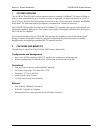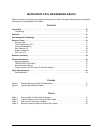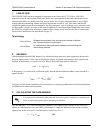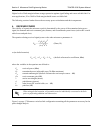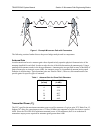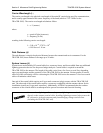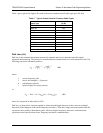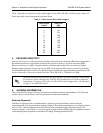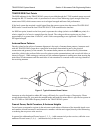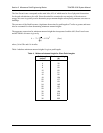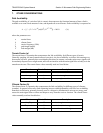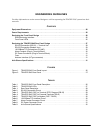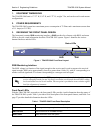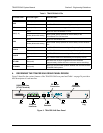
Section 2 Microwave Path Engineering Basics TRACER 5045 System Manual
20 © 2003 ADTRAN, Inc. 612805045L1-1A
Table 3 lists path loss values for various path lengths for the TRACER 5045 5.8 GHz system. Values not
listed in the table can be interpolated from those listed.
5. RECEIVER SENSITIVITY
Receiver sensitivity is a value expressed in decibels referenced to one milliwatt (dBm) that corresponds to
the minimum amount of signal power needed at the receiver to achieve a given bit error rate (BER).
Receiver sensitivity is usually a negative number of decibels and smaller receiver sensitivity (higher
quantity negative number) is better for a given BER. Several factors affect receiver sensitivity including
the data bandwidth of the wireless link, and the amount of additional signal degradation introduced in the
receiver electronics. The receiver sensitivity of the TRACER 5045 is -78 dBm at 10
-6
BER.
6. ANTENNA INFORMATION
The overall wireless system is directly affected by the antenna selection and installation. The following
sections discuss several factors concerning antenna selection and installation.
Antenna Alignment
With line-of-sight microwave communications, optimum system performance requires that the
transmitting and receiving antennas are properly aligned. This ensures maximum received signal power at
each receiver. Antenna alignment must be achieved in both azimuth (along a horizontal plane) and
elevation (along a vertical plane). A received signal strength indicator (RSSI) aids the equipment installer
in determining when alignment is maximized by simply ensuring maximum RSSI.
Table 3. Path Loss for Given Path Lengths
Path Length
(miles)
Path Loss
(dB)
1112
2118
3121
4124
5126
10 132
15 135
20 138
25 140
30 141
35 143
Should an interferer be present nearby, three software selectable bandplans are provided
for frequency agility. Changing the TRACER 5045 bandplan does not require additional
components, or opening of the radio. See TRACER System Configuration > RF Bandplan
on page 47 for additional details.



